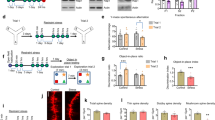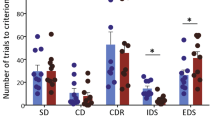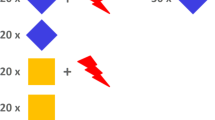Abstract
The prefrontal cortex (PFC) is a crucial hub for the flexible modulation of recent memories (executive functions) as well as for the stable organization of remote memories. Dopamine in the PFC is implicated in both these processes and genetic variants affecting its neurotransmission might control the unique balance between cognitive stability and flexibility present in each individual. Functional genetic variants in the catechol-O-methyltransferase (COMT) gene result in a different catabolism of dopamine in the PFC. However, despite the established role played by COMT genetic variation in executive functions, its impact on remote memory formation and recall is still poorly explored. Here we report that transgenic mice overexpressing the human COMT-Val gene (COMT-Val-tg) present exaggerated remote memories (>50 days) while having unaltered recent memories (<24 h). COMT selectively and reversibly modulated the recall of remote memories as silencing COMT Val overexpression starting from 30 days after the initial aversive conditioning normalized remote memories. COMT genetic overactivity produced a selective overdrive of the endocannabinoid system within the PFC, but not in the striatum and hippocampus, which was associated with enhanced remote memories. Indeed, acute pharmacological blockade of CB1 receptors was sufficient to rescue the altered remote memory recall in COMT-Val-tg mice and increased PFC dopamine levels. These results demonstrate that COMT genetic variations modulate the retrieval of remote memories through the dysregulation of the endocannabinoid system in the PFC.
This is a preview of subscription content, access via your institution
Access options
Subscribe to this journal
Receive 12 print issues and online access
$259.00 per year
only $21.58 per issue
Buy this article
- Purchase on Springer Link
- Instant access to full article PDF
Prices may be subject to local taxes which are calculated during checkout




Similar content being viewed by others
References
Kitamura T, Saitoh Y, Takashima N, Murayama A, Niibori Y, Ageta H et al. Adult neurogenesis modulates the hippocampus-dependent period of associative fear memory. Cell 2009; 139: 814–827.
Frankland PW, Bontempi B . The organization of recent and remote memories. Nat Rev Neurosci 2005; 6: 119–130.
Beeman CL, Bauer PS, Pierson JL, Quinn JJ . Hippocampus and medial prefrontal cortex contributions to trace and contextual fear memory expression over time. Learn Mem 2013; 20: 336–343.
Papaleo F, Lipska BK, Weinberger DR . Mouse models of genetic effects on cognition: relevance to schizophrenia. Neuropharmacology 2012; 62: 1204–1220.
Robbins TW, Kousta S . Uncovering the genetic underpinnings of cognition. Trends Cogn Sci 2011; 15: 375–377.
Davies G, Tenesa A, Payton A, Yang J, Harris SE, Liewald D et al. Genome-wide association studies establish that human intelligence is highly heritable and polygenic. Mol Psychiatry 2011; 16: 996–1005.
Cools R, D’Esposito M . Inverted-U-shaped dopamine actions on human working memory and cognitive control. Biol Psychiatry 2011; 69: e113–e125.
Shohamy D, Adcock RA . Dopamine and adaptive memory. Trends Cogn Sci 2010; 14: 464–472.
Tunbridge EM, Harrison PJ, Weinberger DR . Catechol-o-methyltransferase, cognition, and psychosis: Val158Met and beyond. Biol Psychiatry 2006; 60: 141–151.
Yavich L, Forsberg MM, Karayiorgou M, Gogos Ja, Männistö PT . Site-specific role of catechol-O-methyltransferase in dopamine overflow within prefrontal cortex and dorsal striatum. J Neurosci 2007; 27: 10196–10209.
Papaleo F, Crawley JN, Song J, Lipska BK, Pickel J, Weinberger DR et al. Genetic dissection of the role of catechol-O-methyltransferase in cognition and stress reactivity in mice. J Neurosci 2008; 28: 8709–8723.
Tunbridge EM, Bannerman DM, Sharp T, Harrison PJ . Catechol-O-methyltransferase inhibition improves set-shifting performance and elevates stimulated dopamine release in the rat prefrontal cortex. J Neurosci 2004; 24: 5331–5335.
Matsumoto M, Weickert CS, Akil M, Lipska BK, Hyde TM, Herman MM et al. Catechol O-methyltransferase mRNA expression in human and rat brain: evidence for a role in cortical neuronal function. Neuroscience 2003; 116: 127–137.
Nackley AG, Shabalina SA, Tchivileva IE, Satterfield K, Korchynskyi O, Makarov SS et al. Human catechol-O-methyltransferase haplotypes modulate protein expression by altering mRNA secondary structure. Science 2006; 314: 1930–1933.
Dumontheil I, Roggeman C, Ziermans T, Peyrard-Janvid M, Matsson H, Kere J et al. Influence of the COMT genotype on working memory and brain activity changes during development. Biol Psychiatry 2011; 70: 222–229.
Barnett JH, Jones PB, Robbins TW, Müller U . Effects of the catechol-O-methyltransferase Val158Met polymorphism on executive function: a meta-analysis of the Wisconsin Card Sort Test in schizophrenia and healthy controls. Mol Psychiatry 2007; 12: 502–509.
Bertolino A, Rubino V, Sambataro F, Blasi G, Latorre V, Fazio L et al. Prefrontal-hippocampal coupling during memory processing is modulated by COMT val158met genotype. Biol Psychiatry 2006; 60: 1250–1258.
Rothe C, Koszycki D, Bradwejn J, King N, Deluca V, Tharmalingam S et al. Association of the Val158Met catechol O-methyltransferase genetic polymorphism with panic disorder. Neuropsychopharmacology 2006; 31: 2237–2242.
Kolassa I-T, Kolassa S, Ertl V, Papassotiropoulos A, De Quervain DJ-F . The risk of posttraumatic stress disorder after trauma depends on traumatic load and the catechol-O-methyltransferase Val(158)Met polymorphism. Biol Psychiatry 2010; 67: 304–308.
Marsicano G, Wotjak CT, Azad SC, Bisogno T, Rammes G, Cascio MG et al. The endogenous cannabinoid system controls extinction of aversive memories. Nature 2002; 418: 530–534.
Morena M, Campolongo P . The endocannabinoid system: an emotional buffer in the modulation of memory function. Neurobiol Learn Mem 2014; 112: 30–43.
Tan H, Ahmad T, Loureiro M, Zunder J, Laviolette SR . The role of cannabinoid transmission in emotional memory formation: Implications for addiction and schizophrenia. Front Psychiatry 2014; 5: 1–12.
Caspi A, Moffitt TE, Cannon M, McClay J, Murray R, Harrington H et al. Moderation of the effect of adolescent-onset cannabis use on adult psychosis by a functional polymorphism in the catechol-O-methyltransferase gene: longitudinal evidence of a gene X environment interaction. Biol Psychiatry 2005; 57: 1117–1127.
Tambaro S, Tomasi ML, Bortolato M . Long-term CB1 receptor blockade enhances vulnerability to anxiogenic-like effects of cannabinoids. Neuropharmacology 2013; 70: 268–277.
Managò F, Mereu M, Mastwal S, Mastrogiacomo R, Scheggia D, Emanuele M et al. Genetic disruption of Arc/Arg3.1 in mice causes alterations in dopamine and neurobehavioral phenotypes related to schizophrenia. Cell Rep 2016; 16: 2116–2128.
Paxinos G, Franklin KBJ . Paxinos and Franklin’s the Mouse Brain in Stereotaxic Coordinates, 2nd edn. Academic Press: San Diego, USA, 2001.
Astarita G, Ahmed F, Piomelli D . Lipidomic analysis of biological samples by liquid chromatography coupled to mass spectrometry. Methods Mol Biol 2009; 579: 201–219.
Zamberletti E, Gabaglio M, Prini P, Rubino T, Parolaro D . Cortical neuroinflammation contributes to long-term cognitive dysfunctions following adolescent delta-9-tetrahydrocannabinol treatment in female rats. Eur Neuropsychopharmacol 2015; 25: 2404–2415.
Bolte S, Cordelieres FP . A guided tour into subcellular colocalisation analysis in light microscopy. J Microsc 2006; 224: 13–232.
Kim J, Fanselow M . Modality-specific retrograde amnesia of fear. Science 1992; 256: 675–677.
Quinn JJ, Ma QD, Tinsley MR, Koch C, Fanselow MS . Inverse temporal contributions of the dorsal hippocampus and medial prefrontal cortex to the expression of long-term fear memories. Learn Mem 2008; 15: 368–372.
Restivo L, Vetere G, Bontempi B, Ammassari-Teule M . The formation of recent and remote memory is associated with time-dependent formation of dendritic spines in the hippocampus and anterior cingulate cortex. J Neurosci 2009; 29: 8206–8214.
Milad MR, Quirk GJ . Neurons in medial prefrontal cortex signal memory for fear extinction. Nature 2002; 420: 70–74.
Gogos Ja, Morgan M, Luine V, Santha M, Ogawa S, Pfaff D et al. Catechol-O-methyltransferase-deficient mice exhibit sexually dimorphic changes in catecholamine levels and behavior. Proc Natl Acad Sci USA 1998; 95: 9991–9996.
Gozzi A, Jain A, Giovannelli A, Giovanelli A, Bertollini C, Crestan V et al. A neural switch for active and passive fear. Neuron 2010; 67: 656–666.
Do-Monte FH, Quiñones-Laracuente K, Quirk GJ . A temporal shift in the circuits mediating retrieval of fear memory. Nature 2015; 519: 460–463.
Frankland PW . The involvement of the anterior cingulate cortex in remote contextual fear memory. Science 2004; 304: 881–883.
Di Marzo V, Stella N, Zimmer A . Endocannabinoid signalling and the deteriorating brain. Nat Rev Neurosci 2014; 16: 30–42.
Gräff J, Joseph NF, Horn ME, Samiei A, Meng J, Seo J et al. Epigenetic priming of memory updating during reconsolidation to attenuate remote fear memories. Cell 2014; 156: 261–276.
Simpson EH, Morud J, Winiger V, Biezonski D, Zhu JP, Bach ME et al. Genetic variation in COMT activity impacts learning and dopamine release capacity in the striatum. Learn Mem 2014; 21: 205–214.
Contarino A, Papaleo F . The corticotropin-releasing factor receptor-1 pathway mediates the negative affective states of opiate withdrawal. Proc Natl Acad Sci USA 2005; 102: 18649–18654.
Schott BH, Seidenbecher CI, Fenker DB, Lauer CJ, Bunzeck N, Bernstein H-G et al. The dopaminergic midbrain participates in human episodic memory formation: evidence from genetic imaging. J Neurosci 2006; 26: 1407–1417.
Wimber M, Schott BH, Wendler F, Seidenbecher CI, Behnisch G, Macharadze T et al. Prefrontal dopamine and the dynamic control of human long-term memory. Transl Psychiatry 2011; 1: e15.
Papaleo F, Sannino S, Piras F, Spalletta G . Sex-dichotomous effects of functional COMT genetic variations on cognitive functions disappear after menopause in both health and schizophrenia. Eur Neuropsychopharmacol 2015; 25: 2349–2363.
Papaleo F, Erickson L, Liu G, Chen J, Weinberger DR . Effects of sex and COMT genotype on environmentally modulated cognitive control in mice. Proc Natl Acad Sci USA 2012; 109: 20160–20165.
Sannino S, Gozzi A, Cerasa A, Piras F, Scheggia D, Managò F et al. COMT genetic reduction produces sexually divergent effects on cortical anatomy and working memory in mice and humans. Cereb Cortex 2014; 25: 2529–2541.
Jacobs E, D’Esposito M . Estrogen shapes dopamine-dependent cognitive processes: implications for women’s health. J Neurosci 2011; 31: 5286–5293.
White TP, Loth E, Rubia K, Krabbendam L, Whelan R, Banaschewski T et al. Sex differences in COMT polymorphism effects on prefrontal inhibitory control in adolescence. Neuropsychopharmacology 2014; 39: 2560–2569.
Scheggia D, Bebensee A, Weinberger DR, Papaleo F . The ultimate intra-/extra-dimensional attentional set-shifting task for mice. Biol Psychiatry 2014; 75: 660–670.
Bruder GE, Keilp JG, Xu H, Shikhman M, Schori E, Gorman JM et al. Catechol-O-methyltransferase (COMT) genotypes and working memory: associations with differing cognitive operations. Biol Psychiatry 2005; 58: 901–907.
Egan MF, Goldberg TE, Kolachana BS, Callicott JH, Mazzanti CM, Straub RE et al. Effect of COMT Val108/158 Met genotype on frontal lobe function and risk for schizophrenia. Proc Natl Acad Sci USA 2001; 98: 6917–6922.
Malhotra AK, Kestler LJ, Mazzanti C, Bates Ja, Goldberg T, Goldman D . A functional polymorphism in the COMT gene and performance on a test of prefrontal cognition. Am J Psychiatry 2002; 159: 652–654.
Durstewitz D, Seamans JK . The dual-state theory of prefrontal cortex dopamine function with relevance to catechol-O-methyltransferase genotypes and schizophrenia. Biol Psychiatry 2008; 64: 739–749.
Mueller D, Porter JT, Quirk GJ . Noradrenergic signaling in infralimbic cortex increases cell excitability and strengthens memory for fear extinction. J Neurosci 2008; 28: 369–375.
Kao C-Y, Stalla G, Stalla J, Wotjak CT, Anderzhanova E . Norepinephrine and corticosterone in the medial prefrontal cortex and hippocampus predict PTSD-like symptoms in mice. Eur J Neurosci 2015; 41: 1139–1148.
Clark R, DeYoung CG, Sponheim SR, Bender TL, Polusny MA, Erbes CR et al. Predicting post-traumatic stress disorder in veterans: interaction of traumatic load with COMT gene variation. J Psychiatr Res 2013; 47: 1849–1856.
Humphreys KL, Scheeringa MS, Drury SS . Race moderates the association of catechol-O-methyltransferase genotype and posttraumatic stress disorder in preschool children. J Child Adolesc Psychopharmacol 2014; 24: 454–457.
Winkler EA, Yue JK, Ferguson AR, Temkin NR, Stein MB, Barber J et al. COMT Val(158)Met polymorphism is associated with post-traumatic stress disorder and functional outcome following mild traumatic brain injury. J Clin Neurosci 2016; 35: 109–116.
Sannino S, Padula MC, Managò F, Schaer M, Schneider M, Armando M et al. Adolescence is the starting point of sex-dichotomous COMT genetic effects. Transl Psychiatry 2017; 7: e1141.
Drabant EM, Hariri AR, Meyer-Lindenberg A, Munoz KE, Mattay VS, Kolachana BS et al. Catechol O-methyltransferase val158met genotype and neural mechanisms related to affective arousal and regulation. Arch Gen Psychiatry 2006; 63: 1396–1406.
Heinz A, Smolka MN . The effects of catechol O-methyltransferase genotype on brain activation elicited by affective stimuli and cognitive tasks. Rev Neurosci 2006; 17: 359–367.
Koenigs M, Huey ED, Raymont V, Cheon B, Solomon J, Wassermann EM et al. Focal brain damage protects against post-traumatic stress disorder in combat veterans. Nat Neurosci 2008; 11: 232–237.
Tan H-Y, Callicott JH, Weinberger DR . Dysfunctional and compensatory prefrontal cortical systems, genes and the pathogenesis of schizophrenia. Cereb Cortex 2007; 17 (Suppl 1): i171–i181.
Barch DM, Ceaser A . Cognition in schizophrenia: core psychological and neural mechanisms. Trends Cogn Sci 2012; 16: 27–34.
Lutz B, Marsicano G, Maldonado R, Hillard CJ . The endocannabinoid system in guarding against fear, anxiety and stress. Nat Rev Neurosci 2015; 16: 705–718.
Morena M, Roozendaal B, Trezza V, Ratano P, Peloso A, Hauer D et al. Endogenous cannabinoid release within prefrontal-limbic pathways affects memory consolidation of emotional training. Proc Natl Acad Sci 2014; 111: 18333–18338.
Oliveira da Cruz JF, Robin LM, Drago F, Marsicano G, Metna-Laurent M . Astroglial type-1 cannabinoid receptor (CB1): a new player in the tripartite synapse. Neuroscience 2016; 323: 35–42.
Paspalas CD . Presynaptic D1 dopamine receptors in primate prefrontal cortex: target-specific expression in the glutamatergic synapse. J Neurosci 2005; 25: 1260–1267.
Seamans JK, Yang CR . The principal features and mechanisms of dopamine modulation in the prefrontal cortex. Prog Neurobiol 2004; 74: 1–58.
Bergstrom HC . The neurocircuitry of remote cued fear memory. Neurosci Biobehav Rev 2016; 71: 409–417.
Duvarci S, Pare D . Amygdala microcircuits controlling learned fear. Neuron 2014; 82: 966–980.
Tanimoto S, Nakagawa T, Yamauchi Y, Minami M, Satoh M . Differential contributions of the basolateral and central nuclei of the amygdala in the negative affective component of chemical somatic and visceral pains in rats. Eur J Neurosci 2003; 18: 2343–2350.
Smolka MN, Schumann G, Wrase J, Grüsser SM, Flor H, Mann K et al. Catechol-O-methyltransferase val158met genotype affects processing of emotional stimuli in the amygdala and prefrontal cortex. J Neurosci 2005; 25: 836–842.
Tan H, Lauzon NM, Bishop SF, Chi N, Bechard M, Laviolette SR . Cannabinoid transmission in the basolateral amygdala modulates fear memory formation via functional inputs to the prelimbic cortex. J Neurosci 2011; 31: 5300–5312.
Acknowledgements
We thank Dr M Morini, D Cantatore, C Chiabrera, A Parodi and G Pruzzo for technical assistance. We thank Dr DR Weinberger and the USA National Institutes of Health for donating the COMT Val mutant breeders. We thank Dr A Contarino for discussion on the CPA paradigm. This research was supported by the Istituto Italiano di Tecnologia, the Marie Curie Grant 268247, the 2015 NARSAD Independent Investigator Grant 23234 and by the Compagnia di San Paolo grant 2015-0321.
Author information
Authors and Affiliations
Corresponding author
Ethics declarations
Competing interests
The authors declare no conflict of interest.
Additional information
Supplementary Information accompanies the paper on the Molecular Psychiatry website
Supplementary information
Rights and permissions
About this article
Cite this article
Scheggia, D., Zamberletti, E., Realini, N. et al. Remote memories are enhanced by COMT activity through dysregulation of the endocannabinoid system in the prefrontal cortex. Mol Psychiatry 23, 1040–1050 (2018). https://doi.org/10.1038/mp.2017.126
Received:
Revised:
Accepted:
Published:
Issue Date:
DOI: https://doi.org/10.1038/mp.2017.126
This article is cited by
-
Biological mechanisms of cancer-related fatigue in breast cancer survivors after treatment: a scoping review
Journal of Cancer Survivorship (2023)
-
Dysbindin-1A modulation of astrocytic dopamine and basal ganglia dependent behaviors relevant to schizophrenia
Molecular Psychiatry (2022)
-
The epistatic interaction between the dopamine D3 receptor and dysbindin-1 modulates higher-order cognitive functions in mice and humans
Molecular Psychiatry (2021)
-
Cognitive Enhancement through Genetic Editing: a New Frontier to Explore (and to Regulate)?
Journal of Cognitive Enhancement (2018)
-
Variations in Dysbindin-1 are associated with cognitive response to antipsychotic drug treatment
Nature Communications (2018)



